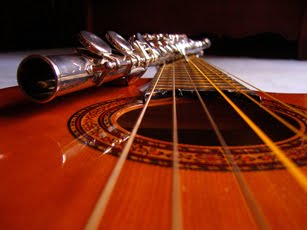Thursday, January 22, 2015
How Cutting Trees Affects Us Eventually
Let us briefly sidestep the present burning issue of the trees cut or mothballed by SM Baguio City and look at the life of a tree or a plant.
In one growing season, one corn plant is said to transpire (absorb water through the roots and return it to the atmosphere through the leaves) more than 200 liters of water. In the 3 months that it grows, the average amount of water that passes through a corn plant daily is about 2 liters. That is, in any given day, 2 liters of water flow through a single plant, not to mention the rest of the water that remains absorbed in the ground or that is retained in the water-table underneath the soil. In a hectare of corn with as many as 20,000 plants or so, 40,000 liters of water is retained each day. That is about 40 cubic meters of water deposited in a hectare of corn alone and, perhaps, the same amount or even much more held by the soil. (A plant cannot continue to live and transpire if there is not enough water available. Clue: Look at the branches and leaves of a tree and you see a reflection of its roots in structure, in symmetry and in dimension, more or less. A tree virtually functions as a living river which conveys water.)
One large tree is also said to transpire about 400 liters of water daily. A mature Baguio pine tree can be assumed to convey the same amount on an average day. Based on that, 60 trees will then convey 24,000 liters or 24 cubic meters of water. Since each person is estimated to use an average of 200 liters of water (about a drum of water) each day for various purposes, depriving a city of 24 cubic meters of water is practically depriving 120 persons (two persons per tree) of their daily water requirement which will have to be sourced out somewhere somehow. This is not considering the effect that removing those many trees have on lowering the water-table and lessening the capacity of the land around it to retain water, leading to eventual lowering of the water-table and depriving existing plants of enough water.
Considering that Baguio is getting overpopulated and overburdened, especially during peak visiting periods, that water deficit becomes multiplied as more and more people will have to fight over the remaining water that is available. We also have to consider the effect of lowering the water-table on the structural integrity of the city’s foundation, as well as aggravating the soil’s capacity to retain water as consolidation of soil particles reduces the air-spaces within the soil.
Can we see what cutting trees does to us? But it may be too late, as we practically have no trees in our cities. Our only hope is to maintain our forests and arable lands. But are we doing that? If we cannot protect our cities in which we reside almost every single day, how can we protect the forests which lie beyond our scope of concern or constant awareness?
For whether you cut 1,000 trees or 100, the effect is the same. Those 1,000 trees may be far from the city and towns; but the water they transpire will join the water transpired by the 100 trees in the atmosphere and fall as one rainfall on the land in torrents to scour and flood the mountains and rivers. Somewhere in that process are humans who will suffer the consequences of 1,100 trees cut or 440,000 liters or 440 cubic meters of water daily possibly rushing down a hill or through a river and causing landslides and ravaging homes along the way. We know how that happens often enough nowadays. And if almost all the typhoons that visit our country originate from the middle of the Pacific Ocean, that may mean that half of the source of the water that falls on our land comes from America, Australia and Pacific nations. The rest may come from Asia. It is quite reasonable to say that what we do to our land we do to ourselves as well as to other nations.
Cutting trees senselessly amounts to cutting our link to the past and to the future. A tree is, in essence, the only water we have in the present; cut it down and you cut off the water that it drank from the past through its roots as well as the water that it will breathe off in the future through its leaves. It is a vital link between Heaven and Earth. It is a crucial source for human life and survival. A desert has neither water nor trees.
Going back to the issue, malls may be nice to have in our towns and cities; but trees are much more preferable and useful for the vast majority. However, our democracy is one that does not totally respect Nature’s or God’s ways.
Finally, at Luneta Park, heroes were martyred for our country; at Luneta Hill, trees were martyred for a city. This desecration is a symbol of the same unbridled power that beset the past. We cannot let it pass by without us crying out in pain.
Subscribe to:
Comments (Atom)


